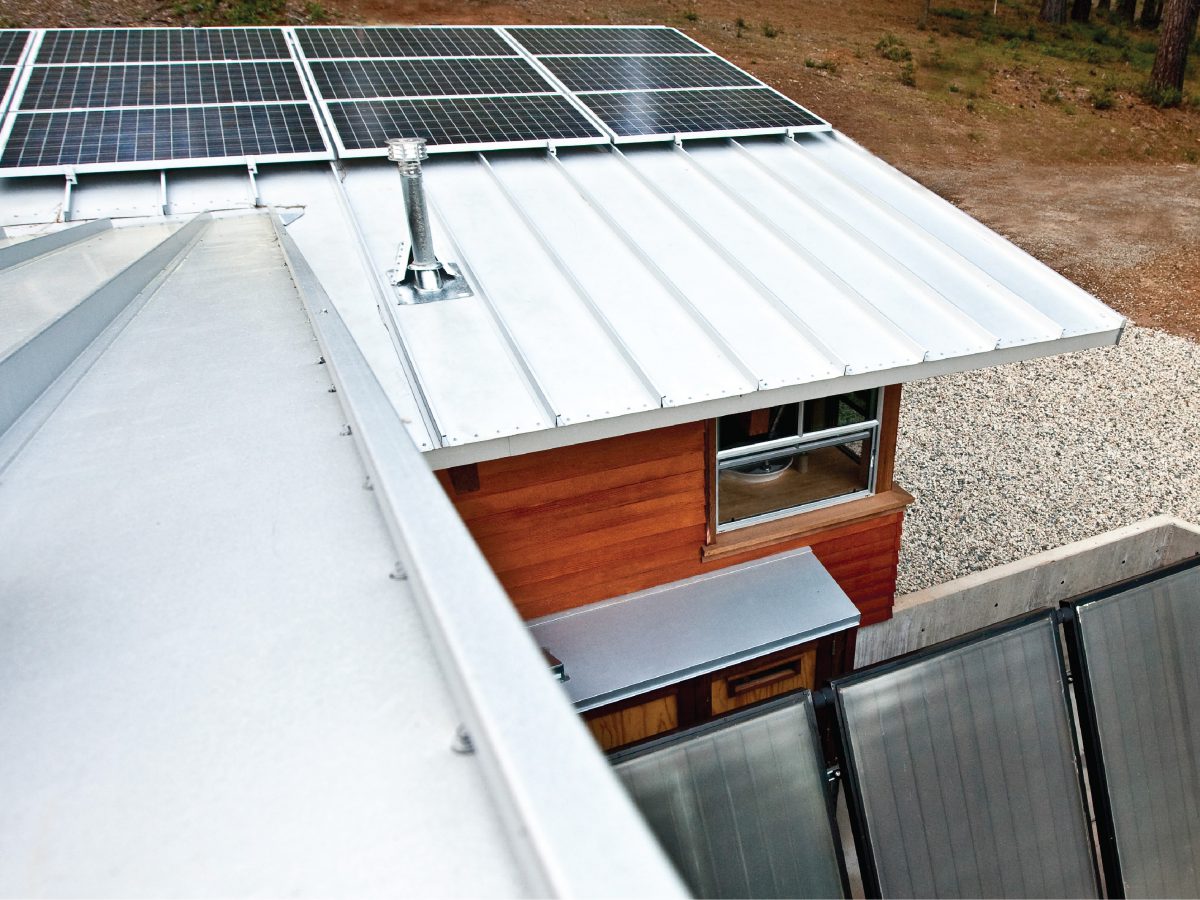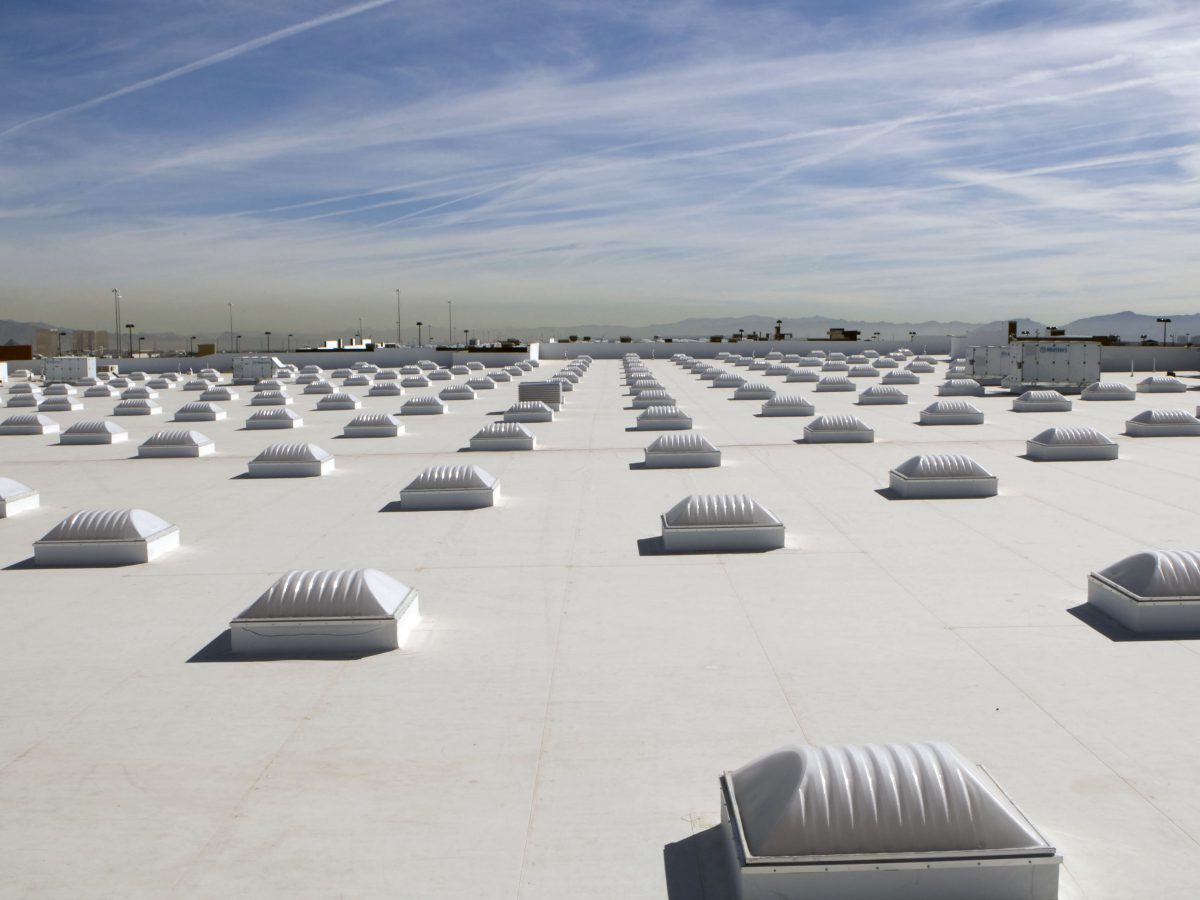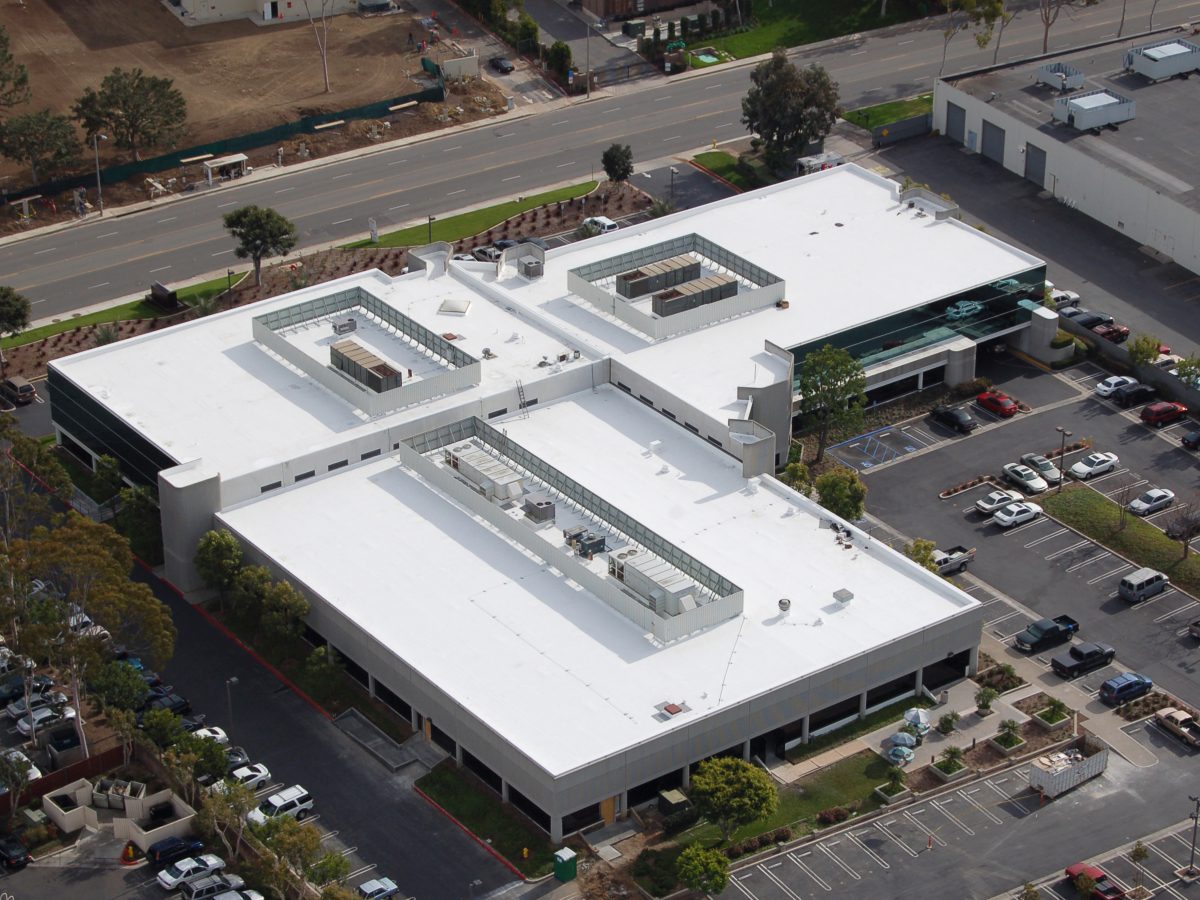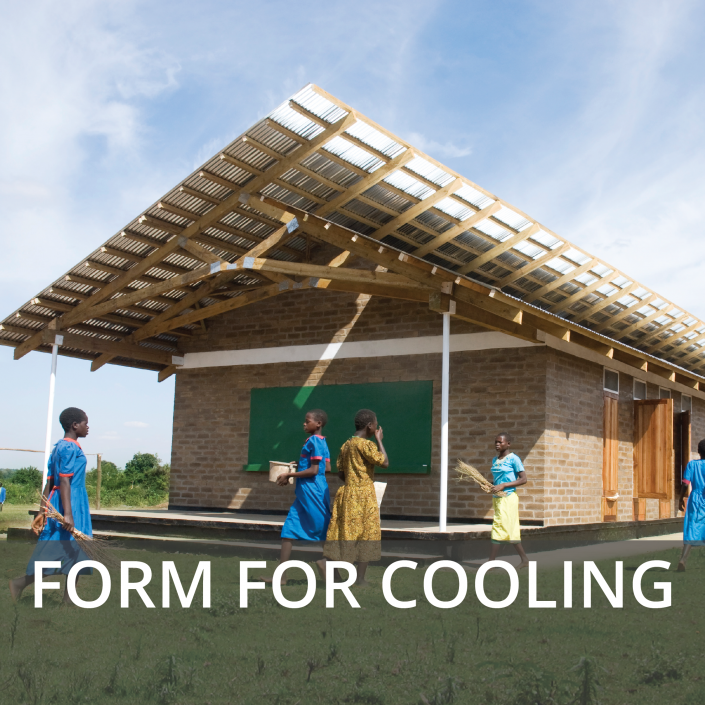In hot climates, and climates with hot summers, a light colored roof reflects sunlight, remains cooler, offsets CO2 warming, and reduces the amount of heat transferred to the interior of a building.
Cool roofs have surfaces that reflect sunlight and emit or discharge heat efficiently, keeping them cooler on sunny days. The two surface properties that determine a roof’s temperature are solar reflectance and thermal emittance, which range on a scale from 0 to 1. The larger the two values are, the cooler the roof will be.
Make the roof surface a light color and chose a roofing material that has a surface:
- Solar Reflectance (SR) of > 0.7; and
- Thermal Emittance (TE) of > 0.75.
In hot climates, cool roofs can help mitigate urban heat islands, reflect solar radiation back to space, and keep indoor spaces comfortable.






















